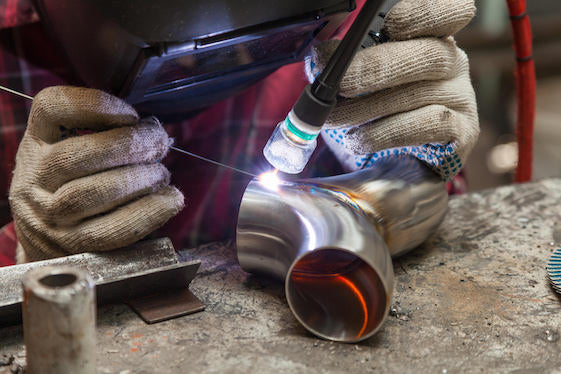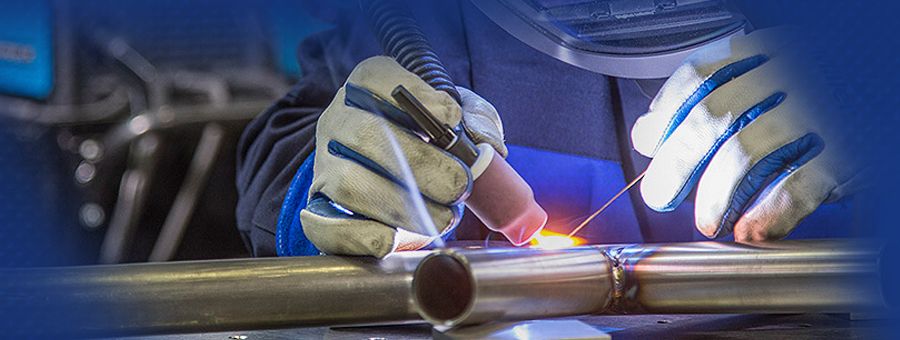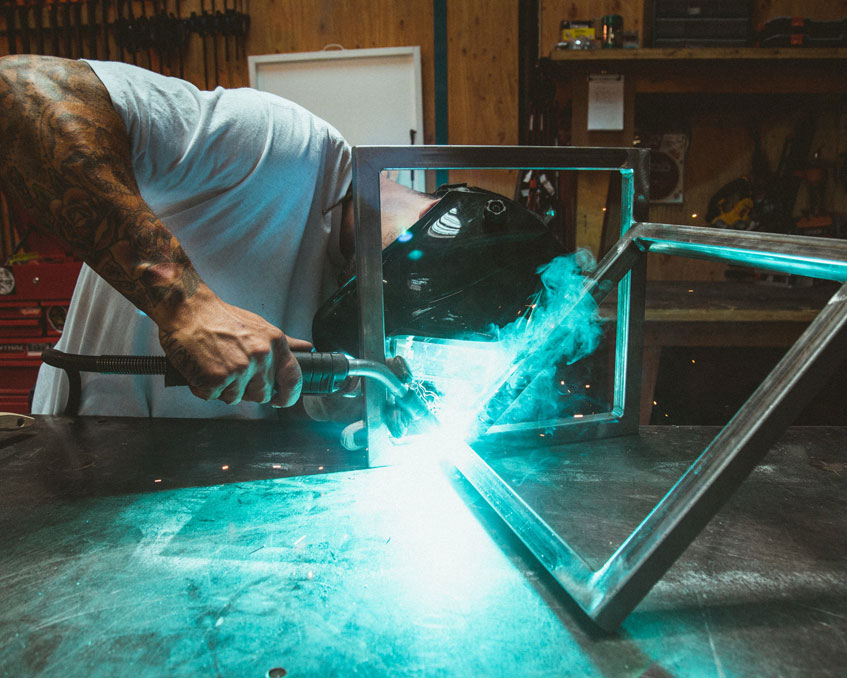Common Welding Fixing Issues and How to Address Them Successfully
Welding repair services frequently run into a variety of problems that can threaten the stability of the final product. Usual problems include inadequate infiltration, porosity, and misalignment, to name a few. Each flaw offers one-of-a-kind obstacles that call for particular methods for resolution. Understanding these issues is crucial for welders intending to enhance their results and abilities. This discussion will discover these usual welding repair work issues and reliable techniques to resolve them.
Insufficient Penetration
Insufficient penetration occurs when the weld metal fails to completely fuse with the base material, causing weak joints and potential architectural failings. This issue often originates from inadequate heat input, incorrect electrode angle, or inappropriate welding speed. Welders may run into poor infiltration because of a mistake of the required criteria for a details product thickness or type. In addition, contamination on the base product's surface area can hinder reliable bonding, worsening the issue. To address poor penetration, welders should guarantee suitable settings on their tools and preserve a tidy job surface area. Routine inspection of welds is suggested to recognize any shortages early, enabling timely improvements and the prevention of endangered architectural honesty in welded assemblies.
Porosity
Porosity is a common flaw in welded joints that materializes as tiny gas bubbles caught within the weld steel. This problem can endanger the stability of the weld, bring about reduced stamina and prospective failure under stress and anxiety. Montana Mobile Welding and Repair Belgrade. Porosity normally arises from contamination, moisture, or inappropriate welding strategies, which allow gases to get away into the molten weld swimming pool. To deal with porosity, welders need to ensure correct surface prep work, keep a tidy workplace, and use suitable welding criteria. In addition, choosing the best filler product and shielding gas can mitigate gas entrapment. Regular inspection and screening of welds can aid determine porosity early, ensuring timely corrective actions are taken, consequently preserving the quality and reliability of the welded structure
Misalignment
Imbalance in welding can arise from various variables, consisting of inappropriate arrangement and thermal expansion. Understanding the origin is crucial for reliable resolution. A number of modification techniques are available to straighten components and assure structural integrity.
Sources of Misalignment
Welding misalignment usually originates from a variety of underlying concerns that can compromise structural honesty. One main reason is improper fit-up of elements prior to welding, which can result in spaces and uneven surface areas. Variations in thermal development throughout the welding procedure can likewise cause distortion, particularly if the products being joined have various coefficients of expansion. Additionally, inadequate clamping and fixturing might stop working to hold parts safely in location, resulting in movement throughout welding. Improperly maintained equipment, consisting of welding devices and devices, may present inconsistencies in the weld grain, additional adding to misalignment. Driver mistake, stemming from inadequate training or experience, can also play a significant role in producing misaligned welds.

Modification Methods Offered
Addressing imbalance effectively calls for a combination of corrective techniques tailored to the certain concerns at hand. One common technique is using jigs or components to hold components in the correct setting during welding, ensuring consistent alignment. Additionally, preheating the products can aid minimize distortion and improve fit-up. For significant imbalance, mechanical adjustment strategies, such as using hydraulic jacks or clamps, can be employed to remedy the placement before welding. Post-weld warm therapy might likewise be necessary to soothe stress and anxieties triggered by imbalance. Careful evaluation and modification during the configuration stage can prevent imbalance concerns from ending up being substantial troubles, promoting a smoother welding process and boosting overall architectural honesty.
Distortion
Distortion is a typical obstacle in welding that can occur from various aspects, including uneven home heating and cooling. Recognizing the reasons for distortion is important for applying reliable prevention techniques. Resolving this concern not only enhances architectural stability yet additionally improves the total high quality of the weld.
Sources of Distortion
When subjected to the extreme warmth of welding, products commonly undertake modifications that can lead to distortion. This phenomenon largely arises from thermal expansion and contraction throughout the welding procedure. As the weld area warms up, the material broadens; upon air conditioning, it acquires, which can create inner tensions. On top of that, unequal home heating across a work surface can worsen these anxieties, resulting in warping or flexing. The sort of product likewise plays a considerable function; steels with varying thermal conductivity and coefficients of expansion might react in different ways, causing uncertain distortions. In addition, bad joint design and insufficient fixturing can add to misalignment throughout welding, boosting the possibility of distortion. Comprehending these causes is essential for efficient welding fixing and prevention methods.
Prevention Techniques
Reliable prevention strategies for distortion during welding focus on controlling warm input and making certain appropriate joint design. Keeping a consistent warm input helps to minimize thermal growth and tightening, which can result in distortion. Utilizing methods such as pre-heating the workpiece can additionally decrease the temperature slope, promoting consistent heating. In addition, selecting appropriate joint designs, such as T-joints or lap joints, can boost security and reduce tension concentrations. Applying correct fixturing to safeguard the workpieces in location better help in maintaining alignment throughout the welding process. Staggered welding series can distribute warmth a lot more uniformly, stopping local distortion. By applying these methods, welders can substantially decrease the likelihood of distortion and enhance the overall top quality of their welds.
Splitting
Fracturing is an usual issue come across in welding repair work, often arising from various elements such as incorrect cooling rates, product choice, or poor joint preparation. The incident of splits can considerably compromise the stability of the weld, causing possible failings throughout procedure. To address this issue, welders need to initially evaluate the source, making sure that materials are suitable and suitably selected for the particular application. Additionally, regulating the cooling rate during the welding process is important; fast air conditioning can cause stress and anxiety and lead to splitting. Appropriate joint layout and preparation additionally add to minimizing the danger. Executing these techniques can boost weld high quality and longevity, inevitably lowering the chance of fracturing in ended up weldments.

Incomplete Combination
A significant concern in welding Read Full Article fixings is insufficient combination, which takes place when the weld metal does not effectively bond with the base product or previous weld passes - Fabrication. This problem can cause weaknesses in the joint, potentially jeopardizing the stability of the bonded structure. Elements contributing to insufficient blend include not enough warmth input, improper welding technique, and contamination of the surfaces being joined. To resolve this issue efficiently, welders must ensure appropriate pre-weld cleaning and surface area prep work, as well as readjust their welding criteria to attain sufficient infiltration and blend. Normal evaluation throughout the welding process can additionally aid determine incomplete blend early, allowing for timely rehabilitative actions to boost the overall top quality of the weld
Overheating
While welding repair services can improve structural stability, overheating presents a considerable challenge that can lead to product deterioration. Excessive warm during welding can alter the mechanical residential properties of metals, causing lowered stamina, increased brittleness, and bending. This phenomenon is specifically important in high-stress applications where architectural integrity is extremely important. Recognizing overheating can include aesthetic evaluations for discoloration or distortion, along with checking temperature level during the welding procedure. To reduce the risks connected with overheating, welders should employ appropriate techniques, such as managing warmth input, adjusting traveling rate, and making use of suitable filler products. Additionally, implementing pre- and post-weld heat treatments can aid bring back product residential properties and improve the general high quality of the repair service, ensuring long-lasting efficiency and safety and security.
Often Asked Inquiries
What Are the Common Signs of a Welding Flaw?

How Can I Evaluate My Welds for High quality?
To evaluate welds for high quality, one can make use of aesthetic evaluations, ultrasonic screening, and radiographic approaches. Each technique assures architectural integrity, identifies defects, and confirms adherence to specified requirements, inevitably enhancing the reliability of the bonded joints.
What Safety Safety Measures Should I Take While Welding?
When welding, one ought to prioritize security by putting on suitable individual protective tools, ensuring appropriate ventilation, protecting flammable materials away, keeping a tidy workspace, and recognizing environments to avoid mishaps and injuries.
Can I Fix a Weld Without Redoing the Entire Joint?
Repairing a weld without redesigning the entire joint is possible, relying on the damage (Belgrade). Methods such as grinding, adding filler product, or making use of a welding procedure can successfully attend to particular imperfections while preserving the surrounding structure
What Devices Are Essential for Effective Welding Repairs?
Crucial tools for effective welding repairs include a welding maker, cable brush, mill, safety equipment, clamps, and filler products. Each tool plays a vital duty in guaranteeing top quality and safety during the repair procedure. Porosity typically occurs from contamination, moisture, or improper welding strategies, which enable gases to leave right into the liquified weld pool. Poorly maintained devices, including welding devices and tools, might present disparities in the weld bead, further adding to imbalance. When subjected to the intense warmth of welding, products frequently go through adjustments that can lead to distortion. Breaking is a typical concern encountered in welding repair services, usually resulting from numerous variables such as incorrect air conditioning rates, material option, or poor joint preparation. A considerable check my reference issue in welding try here repair services is insufficient blend, which happens when the weld metal does not adequately bond with the base product or previous weld passes.